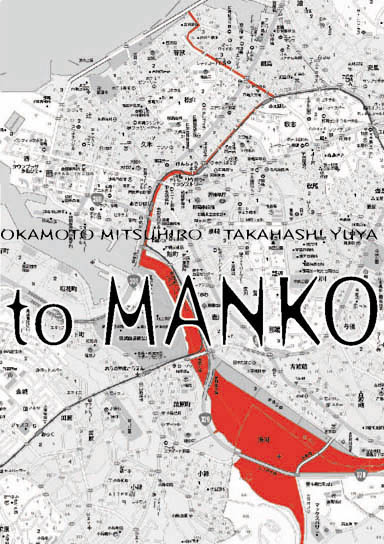To Manko
Performance with Takahashi Yuya, and documentary video, 2005
Otou-matsuri is a fire festival at Kumano, Wakayama.
It remains an ancient ceremony in Japan. Over 2,000 man with white kimono
go down a steep stone staircase
from Gotobiki-iwa(as a symbol of male genital) to Ohyunohara(as a symbol
of female genital).
“To Manko” was performed by two Japanese men, Okamoto Mitsuhiro and Takahashi Yuya, 2005.
Both artists rode on the small yellow boat and rowed from the Shiowatari River, in the front of Maejima Art Center, to Lake Manko.
It took two hours for arrival, and the distance was about 3.6 kilo meters.
The camera was fixed at the tip of the boat, and the scenery from Okinawan
river to lake Manko was automatically recorded as video.
We simulated an ancient Japanese ceremony across Okinawa as an attempt
to connect Yamato with Ryukyu, as well as man and woman.
At the point of view of Feng Sui thought, the artwork has an aspect of
religious ceremony.
OKAMOTO Mitsuhiro, 2006
English translation: KIBUKAWA Ei (eitoeiko)
|
 |